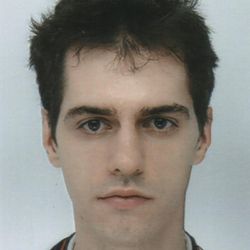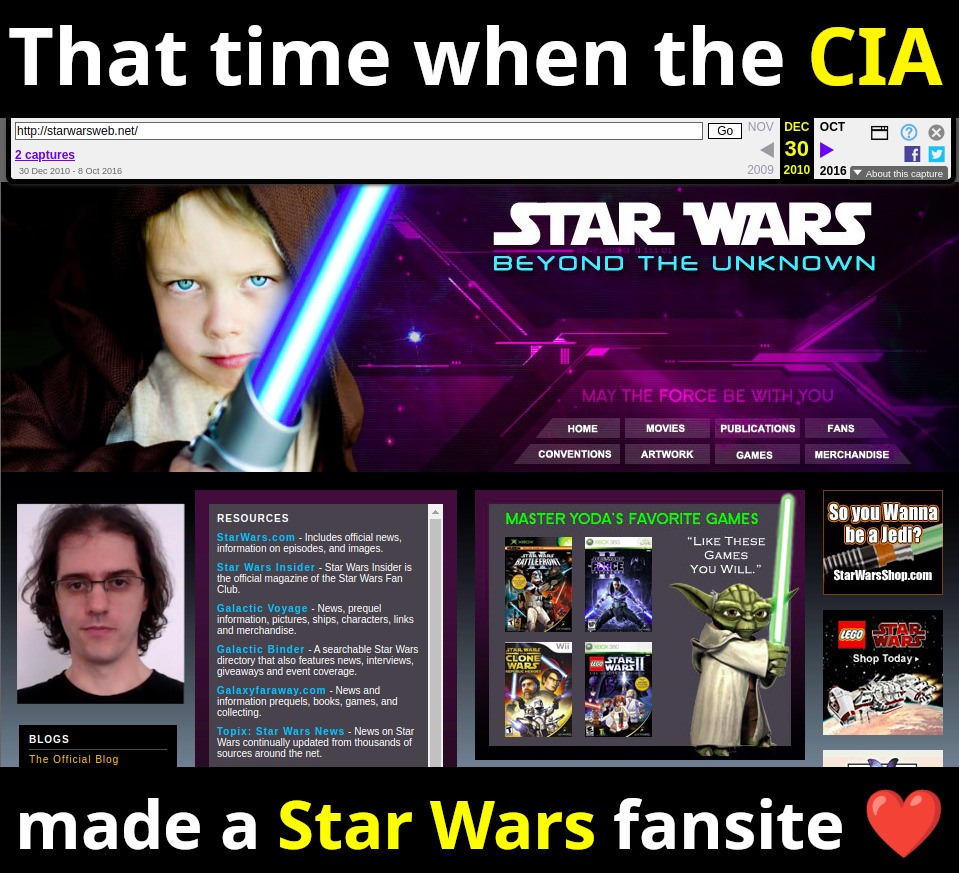4chan backlinks to Ciro Santilli's website by  Ciro Santilli 37 Created 2024-08-27 Updated 2025-07-16
Ciro Santilli 37 Created 2024-08-27 Updated 2025-07-16
These can be incredibly flattering if you only ignore all of their obscure default hatelingo:
- 2024-08-21 boards.4chan.org/g/thread/101996897 to x86 bare metal examples
- boards.4chan.org/g/thread/101567125 archive.ph/pEhoR "Any schizo websites" quick link by anon, but no further comments. Meh. Most of the sites are boring as well, they seem to think that dark background with non white color or lots of content means schizo.
- 2020-09-21 "ITT: weird sites you found by accident" on a comment. archive.vn/wip/Zz7fx (original). See also Section "Why Ciro Santilli refers to himself in the third person"
- 2020-04-30 "Interesting Website thread" on a comment. archive.is/LgDbK (original). See also Section "Why Ciro Santilli refers to himself in the third person"
Aratu Week 2024 Talk by Ciro Santilli: My Best Random Projects by  Ciro Santilli 37 Created 2024-08-27 Updated 2025-07-16
Ciro Santilli 37 Created 2024-08-27 Updated 2025-07-16
This talk was presented on 24 September 2024 as part of the 2024 Aratu Week, a small online conference by Brazilian hacker interest group Boitatech.
How to contact me: Section "How to contact Ciro Santilli"
Links to this talk:
Self-recorded presentation VOD
. Source. Presentation upload by the organizers
. Source. Created by the german chemist Carl Friedrich Claus, it makes it possible to convert hydrogen sulfide (from natural gas) to elemental sulfur.
The overall reaction can be descibed as follows:
The overall reaction can be descibed as follows:
The Claus' process served as a better replacement of the Frasch process, which obtained elemental sulfur from naturally found deposits underground.
Sulfur that occurs as an unwanted compound in natural gas is also removed by hydrogenation, which yields hydrogen sulfide.
Household bleach mainly contains sodium hypochloride, NaOCl (eau de Javel). It is an unstable white powder that dissolves in water to give a yellow stable solution.
It also contains small amounts of NaoH, and . The first method of producing bleach involved a reaction between chloride gas and sodium carbonate (). Later, sodium carbonate was replaced by caustic soda (soda lye), NaOH, a cheaper substance that also made the production more efficient.
The raw materials of the reaction, chloride and caustic soda come from the electrolysis of brine.
Bleach refers to a wide range of chemical substances that are used mainly in order to whiten fabrics, clean surfaces and disinfect water supplies.
This range of substances works by oxidizing the molecules that either stain our clothes/furniture, or are part of unwanted germs. They can be divided into two main products:
Hydrogen sulfide (formula: ) is a chemical compound which occurs as a colourless gas with acidic properties. Its characteristic odor, which resembles that of rotten eggs makes the identification of the compound easy.
It is present in the atmosphere (in low concetrations, less than 0.0003ppm) and also works as a signaling molecule for many animals, including humans. Its odor can be identified at concentrations of around 0.1 to 0.15ppm. As the concentration increases, it obtains a sweet odor and becomes deadly.
It's corrosive and flammable.
Pinned article: Introduction to the OurBigBook Project
Welcome to the OurBigBook Project! Our goal is to create the perfect publishing platform for STEM subjects, and get university-level students to write the best free STEM tutorials ever.
Everyone is welcome to create an account and play with the site: ourbigbook.com/go/register. We belive that students themselves can write amazing tutorials, but teachers are welcome too. You can write about anything you want, it doesn't have to be STEM or even educational. Silly test content is very welcome and you won't be penalized in any way. Just keep it legal!
Intro to OurBigBook
. Source. We have two killer features:
- topics: topics group articles by different users with the same title, e.g. here is the topic for the "Fundamental Theorem of Calculus" ourbigbook.com/go/topic/fundamental-theorem-of-calculusArticles of different users are sorted by upvote within each article page. This feature is a bit like:
- a Wikipedia where each user can have their own version of each article
- a Q&A website like Stack Overflow, where multiple people can give their views on a given topic, and the best ones are sorted by upvote. Except you don't need to wait for someone to ask first, and any topic goes, no matter how narrow or broad
This feature makes it possible for readers to find better explanations of any topic created by other writers. And it allows writers to create an explanation in a place that readers might actually find it.Figure 1. Screenshot of the "Derivative" topic page. View it live at: ourbigbook.com/go/topic/derivativeVideo 2. OurBigBook Web topics demo. Source. - local editing: you can store all your personal knowledge base content locally in a plaintext markup format that can be edited locally and published either:This way you can be sure that even if OurBigBook.com were to go down one day (which we have no plans to do as it is quite cheap to host!), your content will still be perfectly readable as a static site.
- to OurBigBook.com to get awesome multi-user features like topics and likes
- as HTML files to a static website, which you can host yourself for free on many external providers like GitHub Pages, and remain in full control
Figure 3. Visual Studio Code extension installation.Figure 4. Visual Studio Code extension tree navigation.Figure 5. Web editor. You can also edit articles on the Web editor without installing anything locally.Video 3. Edit locally and publish demo. Source. This shows editing OurBigBook Markup and publishing it using the Visual Studio Code extension.Video 4. OurBigBook Visual Studio Code extension editing and navigation demo. Source. - Infinitely deep tables of contents:
All our software is open source and hosted at: github.com/ourbigbook/ourbigbook
Further documentation can be found at: docs.ourbigbook.com
Feel free to reach our to us for any help or suggestions: docs.ourbigbook.com/#contact







